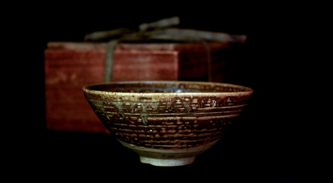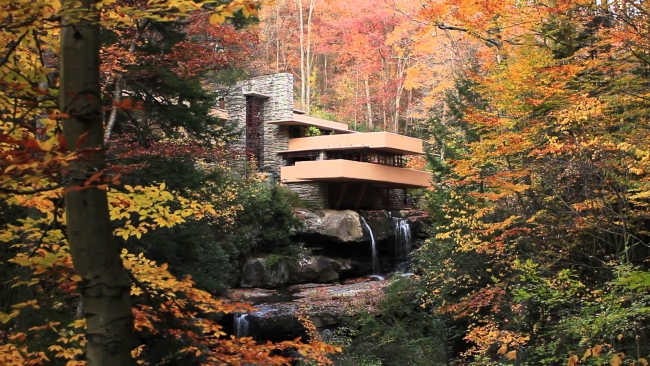Shibui
|
The Japanese aesthetic of shibui draws upon silent, unobtrusive qualities. A person, performance or an object can be considered shibui. Each are authentic and appealing without the need for decoration – this is the shibui ideal.
Something shibui, although seemingly simplistic, evokes appreciation for the complex nature of life. Its intent is to reveal the beauty in what has come to be considered ordinary or mundane. The word mundane in its Latin form mundus actually means ‘the world’. The world is far from ordinary. The shibui aesthetic opens our eyes to the beauty of real life – the every day miricles.
Art and design termed shibui merges nature with day to day living. For example; the wave in the grain of a structural post, the uneven texture of a tea bowl, the solitary blossom in a flower arrangement. Natural elements help to connect and re-align us with nature on a subconscious level.
Yanagi Soetsu, philosopher and founder of the Japanese folk craft movement (mingei) refers to shibui as a refined taste, an understanding we arrive at over time. In his book The Unknown Craftsman Yanagi challenges conventional ideas of art and beauty, exploring the Japanese appreciation for “objects born, not made.”
“The world abounds with different aspects of beauty. The lovely, the powerful, the gay, the smart—all belong to the beautiful. Each person, according to his disposition and environment, will feel a special affinity to one or another aspect. But when his taste grows more refined, he will necessarily arrive at a beauty which is shibui. Many a term serves to denote the secret of beauty, but this is the final word.”
– Yanagi Soetsu (1889 -1961) Shibui in Ikebana
Ikebana demonstrates the shibui aesthetic with familiar materials, presented in unfamiliar ways. This compels us to slow down and look at the ordinary again, with new eyes. Through observation, details such a the pattern of a leaf, the line of a stem, reveal meaning.
|
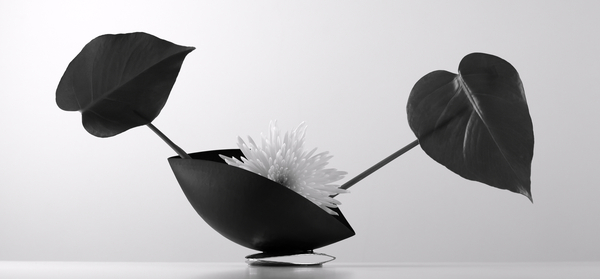
Shibui in Pottery
Japanese pottery embodies the shibui design aesthetic. Characteristics include those of wabi-sabi but cover a wider design scope. Objects often feature asymmetry and uneven raw textures but they can also include more refined, glazed surfaces. The objective is to draw attention to the awe inspiring detail of the natural world.
|
|
Architecture aligned with nature. The word shibui is often used interchangeably with suki which describes the aesthetic of the Japanese tea room (sukiya)
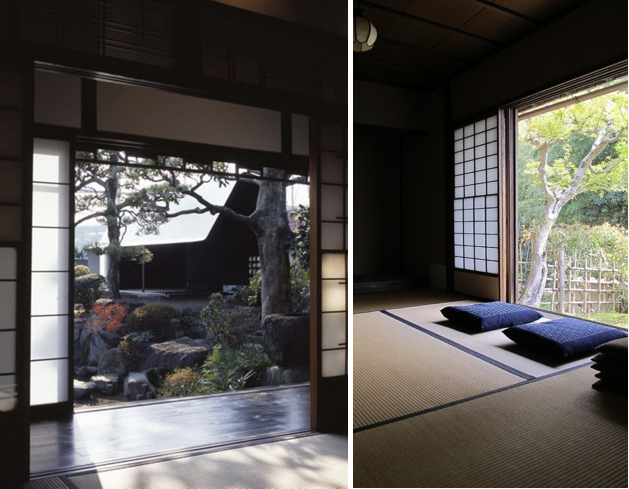
The inspirational work of architect Frank Lloyd Wright (1867 – 1959) was influenced by his understanding of the Japanese aesthetic approach to life. In his autobiography he wrote of his observations of nature during visits to Japan and his attraction to the spiritual values. Over his lifetime he became one of the most important collectors and dealers of Japanese art in the US.
“True ornament is not about prettifying externals. It is organic with the structure it adorns, whether a person, a building or a park.”
– Frank Lloyd Wright
– Frank Lloyd Wright
Frank Lloyd wright gained notoriety for his organic approach to architecture, asserting that form and function be viewed as one. Perhaps his most celebrated example is ‘Falling water’ in which the home appears as part of the falls. Rather than designing with a view in mind, the building as an integral part of the view, stressing the importance of working in conjunction with nature. His goal was to enhance the environment and the life and times of the people who come to call it home.
|
Shibui reaches the western world
Outside of Japan the term shibui was almost unheard of until a special feature in the August 1960 edition of House Beautiful magazine entitled:
“Discover Shibui: The Word for the Highest Level in Beauty.”
The August issue was followed by the September 1960 issue:
“How to be Shibui with American Things”.
Elizabeth Gordon, editor in chief of House Beautiful (1941-1964), studied the topic of shibui in great depth. She wrote in the August issue:
“Shibui describes a profound, unassuming, quiet feeling. It is unobtrusive and unostentatious. It may have hidden attainments, but they are not paraded or displayed. The form is simple and must have been arrived at with an economy of means. Shibui is never complicated or contrived… Shibui beauty, as in the beauty of the tea ceremony, is beauty that makes an artist of the viewer.”
|
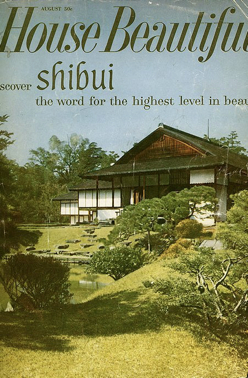 |
The shibui aesthetic is way of being, an approach to life, an attitude that notices and values the beauty in the everyday. It is to be found all around us, anyplace, anytime.
Donna Canning



